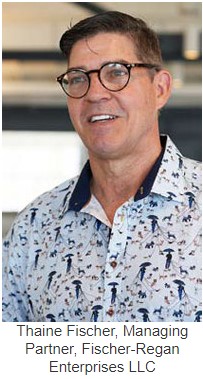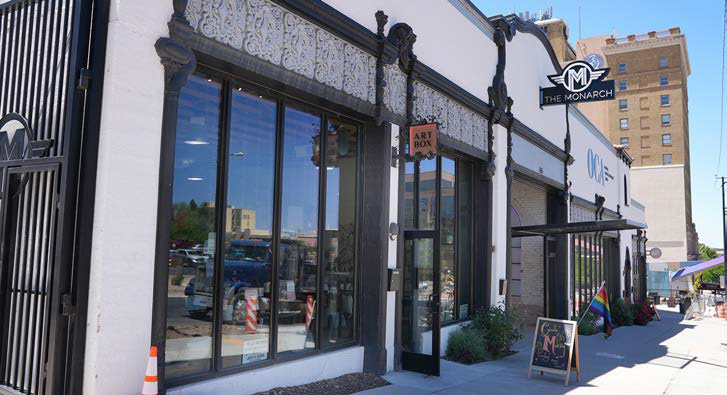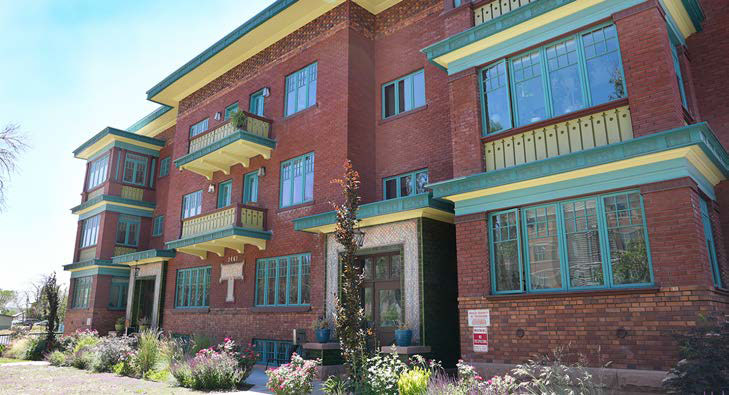
 If you’re looking for turn-of-the-century commercial architecture in Utah, look no further than Historic 25th Street in downtown Ogden. Officially designated as a National Historic District in 1978, the three-block stretch running from Wall Avenue to Washington Boulevard boasts blocks of buildings from the 1800s and early 1900s.
If you’re looking for turn-of-the-century commercial architecture in Utah, look no further than Historic 25th Street in downtown Ogden. Officially designated as a National Historic District in 1978, the three-block stretch running from Wall Avenue to Washington Boulevard boasts blocks of buildings from the 1800s and early 1900s.
Originally built to support the influx of railroad travelers when Ogden’s Union Station became the junction between the Union Pacific and the Central Pacific railroads, this area was a thriving hub of commerce for many years. However, as rail travel fell out of favor in the 1950s and 1960s, Ogden’s Historic 25th Street also saw its first period of economic decline.
Renewed interest in the area came in the late 1970s when the Junior League and local property owners created the Historic Preservation Committee. Following that, the area was recognized on the National Register of Historic Places in 1978, and the 25th Street redevelopment district was created in 1979.
For the next 30-40 years, Historic 25th Street saw a prolonged period of decline. Many buildings had their maintenance deferred as the area went through an economic slump.
However, that’s not the Historic 25th Street or downtown Ogden we know today. Locals and visitors alike are familiar with a bustling, thriving area that’s home to community events, festivals and some of the area’s best eateries and shops. Downtown Odgen and the Historic 25th Street now offer entertainment and events to rival bigger cities like Salt Lake City and Provo.
Looking back, it seems the catalyst for the change came about with the announcement of the 2002 Winter Olympics and subsequent Renaissance Plan, designed to bring new life to the area. Visionary political leaders, including Mayor Matthew Godfrey and Mayor Mike Caldwell, also had a big part to play in the betterment of Ogden and the 25th Street area.
As a result, investment in the area led to improvements like the creation of an outdoor amphitheater and redesign of the block to add open spaces for events and activities. This gave Ogden residents a place to enjoy annual outdoor events like the Ogden Arts Festival, 1st Friday Arts Stroll, Summer’s Farmers Market, Pioneer Day Celebration and the Christmas Village.
When Social Entrepreneurship Drives Development
One development team with a heart for social entrepreneurship has heavily invested in redeveloping Ogden’s historical assets, renovating 10 buildings in the past 10 years. These projects have given Ogden’s Historic 25th Street and the neighboring area a breath of new life and energy.
Fischer-Regan Enterprises, led by managing partner Thaine Fischer, invests in real estate with the end goal of achieving social change. Thaine and his team are motivated to transform and improve social, environmental, educational and economic conditions, specifically by rehabbing and giving purpose to historical buildings that were once thought outdated.
Thane explains, “We are inspired by the past but look toward the future. We take on these projects because we see the possibilities — what these buildings can become and how they can uplift our community.”
One essential tenant for all the work Fischer-Regan Enterprises does is that the projects are genuinely local. “I like to say, we don’t do any work or take on projects we can’t walk to,” Thaine explained. They also choose to invest in and redevelop older properties rather than tearing them down.
One of their first projects in Ogden was the renovation of the old Star Noodle Parlor, which had been unoccupied and deteriorating for years. Thaine and his team invested in and renovated the space, and it’s now occupied by Owner/Executive Chef Geraldine Sepulveda’s Stellas on 25th and the Underground at Stellas and 225 Speakeasy.
These businesses are now wildly popular with locals and visitors to Ogden, in part for their unique ambiance. With exposed brick walls, wide plank flooring and wood ceiling beams, the space is stunning and nothing like the tired, abandoned building it once was.

The Monarch is the epicenter of Ogden’s Nine Rails Creative District offering workspaces,
innovative restaurants, private event space, exhibition space and a community maker’s space.
The Monarch is another one of Thaine’s projects. Located in the epicenter of Ogden’s Nine Rails Creative District and surrounded by elegant historical buildings, it’s hard to believe it was once an abandoned historic parking garage from the 1920s.
But thanks to the investment and effort by Thaine and the Fischer-Regan Enterprises team, more than 40 local businesses now call The Monarch home. From creative workspaces, restaurants, a private event space and nonprofit exhibition space to a community maker’s space and galleries, it’s easy to see why this building is embraced as the heart of the artistic community in Ogden.
While all of Fischer-Regan Enterprises’ portfolio of properties provide new business opportunities, investing in them goes beyond the traditional business case of creating jobs and tax revenue. It’s also about giving community members a renewed sense of pride and a piece of their history back.
“When we’re working on some of these properties, people will come up to us and talk. They’ll tell us that their parents once worked in the building, or they had their first date there,” Thaine said. “We love hearing these stories things. It reminds us that our work helps community members reconnect with their past while giving them places to build their future.”
Community-Focused Banking with Wasatch Peaks Credit Union
When it comes to making the numbers work, Thaine and his team prefer to buy and invest in buildings that predate 1936 because they are eligible for a federal tax credit. “We like to do it that way because the tax credits help bridge the gap with these more difficult buildings,” he explained.
“We’ll buy the properties and do the re-design and renovation work and adaptive new use. Then we need to secure permanent debt on the projects.” In the past, Thaine worked with some of the bigger banks to fund his projects, but he didn’t get the type of service or relationship he hoped for.
“When working with the big banks, you’re a new customer each time you come in. No matter how many projects you’ve already done together, you have to start from the beginning each time. That’s frustrating,” Thaine explained.
“But my experience working with Wasatch Peaks Credit Union is completely different. All credit decisions are made locally and the factors that go into their loan decision-making are different. They’re not just considering the financials. They’re interested in the social impact, too,” Thaine said.
“Wasatch Peaks Credit Union also appreciates the less traditional projects. Time and again, they’ve let us show that our strategy for developing these older, historic buildings is profitable. And not only that, but they want to be a part of providing the positive social impact that comes with this type of development.”
What started with a single financial transaction back in 2015 has turned into a long-term relationship where Wasatch Peaks is Fischer-Regan Enterprises’ primary credit source. “They have ongoing access to my financials and it feels like a partnership. I can call their team directly any time I have a question. You don’t get this type of service with the bigger banks. That’s just one reason working with Wasatch Peaks is refreshing.”
“We’ve acquired over 13 buildings in downtown Ogden, redeveloped and stabilized 10 of them in the past decade, and Wasatch Peaks Credit Union has been with us the whole time. I value the relationship I have with Wasatch Peaks Credit Union and recommend Greg Washburn and his Business Lending team highly. Their commitment to local businesses in Davis, Morgan and Weber counties shows in everything they do.”
With social entrepreneurs like Fischer-Regan Enterprises and community-based lenders like Wasatch Peaks, investing in the community and its historical assets makes sense.

Previously low-income housing, the Historic Peery’s Apartments became Peery Lofts in
2019. The 106-year-old building features outstanding architectural details.







